
Blimp Drone
With the appearance of drones, quads, hard-winged, micro, macro,... a completely new technology appeared, which as time goes on can and should be adapted to LTA technology.
It is time for a synergy between these two technologies to the benefit of both.
Merging LTA and drone technology
Until now, the design of externally flying blimps has been deeply burdened by the legacy of the past. And all that is fine because there was no other choice. With the advent of digital technologies, and especially its application to drones, a completely new class of technology has emerged whose benefits in stabilization and flight control can also be applied to LTA technology. We needed various experiments such as T-Blimp, UniBlimp and various other concepts, more or less successful, to finally understand that the further life and progress of LTA technology is not possible without the use and synergy with other compatible technologies.
First the shape -The main problem with Zeppelin-shaped flight is that there is a drastic difference between frontal and cross section aerodynamic resistance (nose and sides). With the ellipsoidal shape, we greatly reduce these differences so that there are no large fluctuations in aerodynamic resistance during the flight. Through tests in the wind tunnel (simulation), we found that the frontal and cross section is in the ratio of 68% (0.68), while this ratio in the Zeppelin shape is 250% and even more (depending on the shape and size of the stabilizer). 0.68 to 2.5 or more - is a big difference.
Second the Power - Every pilot of any aircraft will always want more power. As much as he has - again more power. Which is understandable. Since there is "no support" during the flight itself, the only thing we can rely on is the power of the engine - that is, how much something pushes or pulls us. Adopting an ellipsoid shape, we rearranged the volume distribution and thereby enabled more power on a smaller body.
Third the Synergy - As the final result is the combination of all elements from form to software. This is exactly the Blimp-Drone prorotype whose photos and video you see. We have created a 3.4 m x 2 m x 1.4 m ellipsoidal prototype on which we will perform all the necessary tests in order to fine-tune it. For the market, from the year 2026, we release a 5.2m x 3m x 2.2m Blimp-Drone with a payload of at least 3 kg, the working name of which is BD-5.2F-26
First 3.4 m Blimp drone prototype
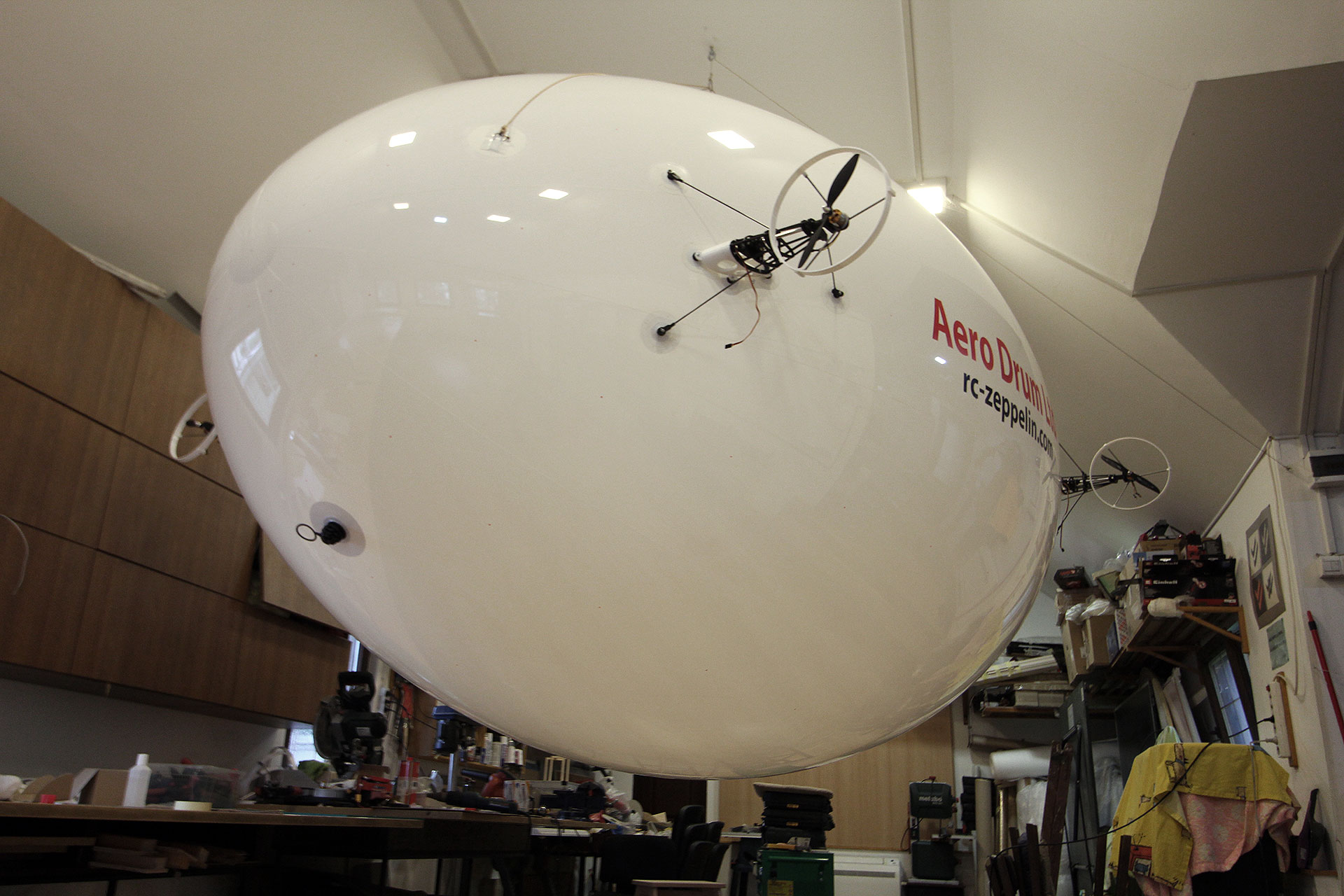
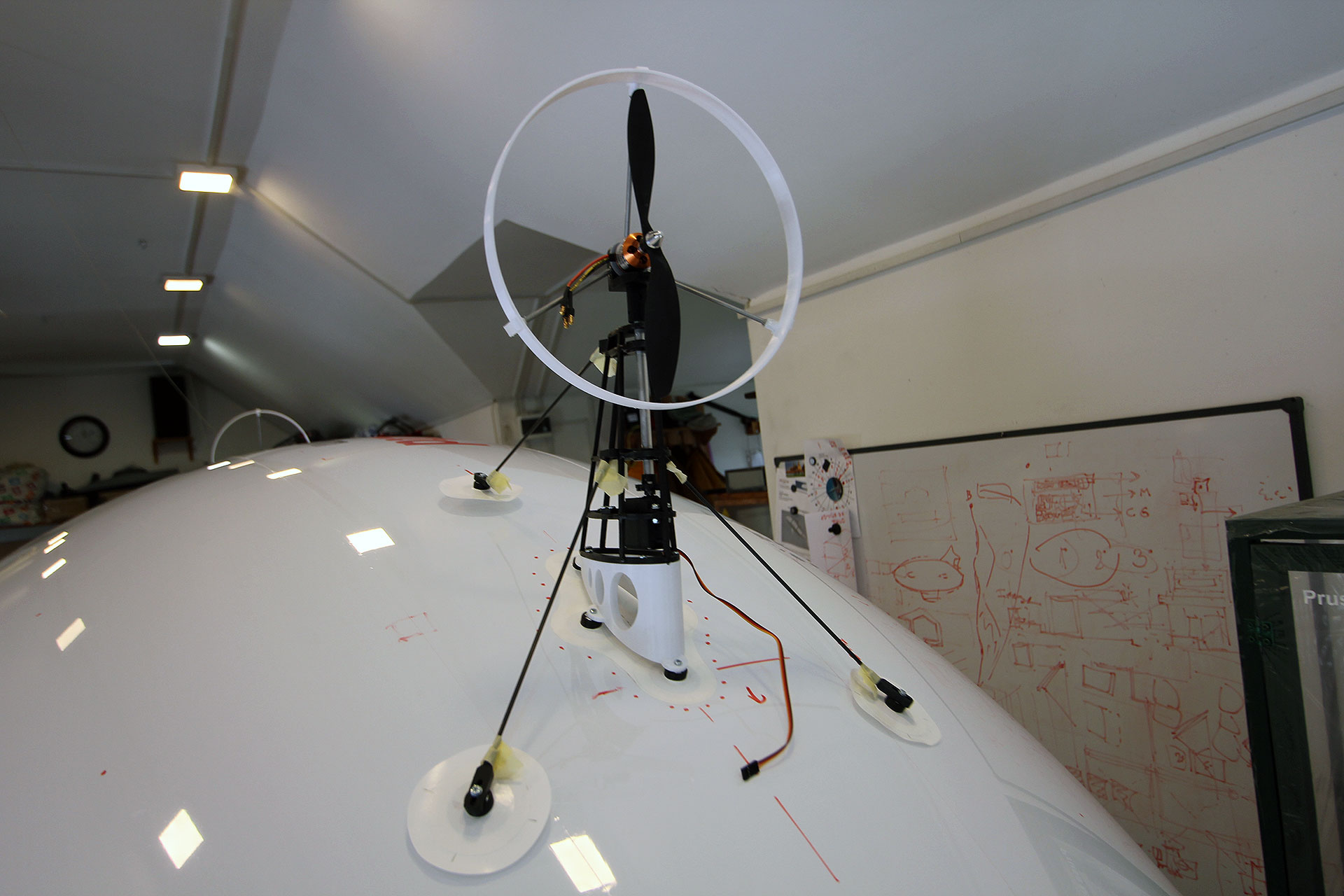
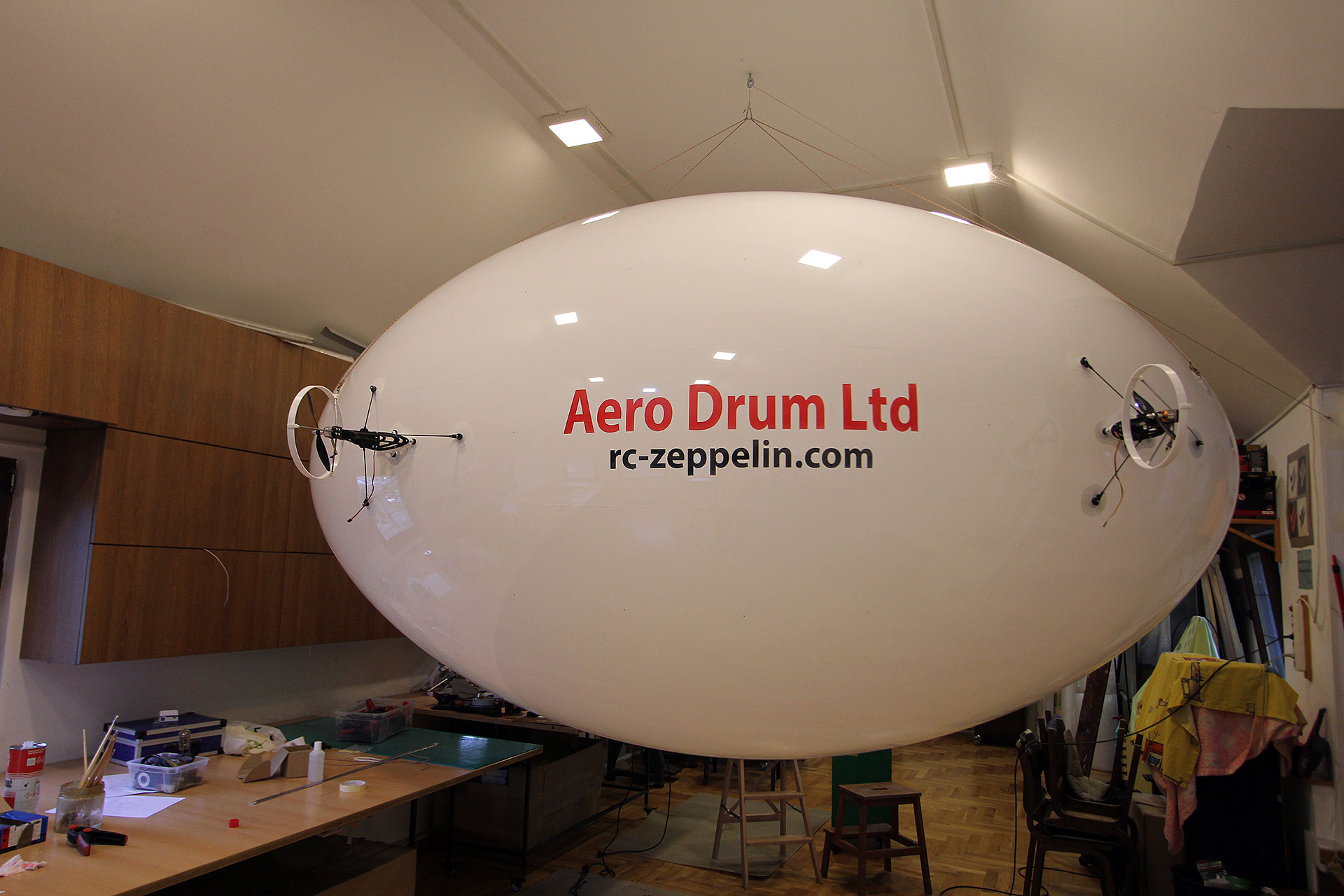
Main features and description of the Blimp Drone
How does a totally non-aerodynamic drone (quad or other) fly? Simply by using controlled raw power. That controlled power is made possible by digitization, sensors, speed controllers and the hardware design itself.
We reduced Blimp drones to just those components. There are no stabilizers with ailerons that would only add weight and complicate the design itself. Just a balloon and 4 engines with a nacelle where the electronics are located.
There is a feature of blimps that drones do not have - and that is that one m3 of helium or hydrogen can lift roughly one kilogram of cargo. In other words, when the engines are not working, it is still floating and there is no danger of crashing. So where there is no need for extremely precise positioning in the air, the advantage of Blimp-Drones is unsurpassed. With the rotating camera of 360, let him just hover without using the engine and that greatly increases the autonomy of the flight by several times. Theoretically and by design, the Blimp drone has perfectly suitable surfaces for solar cells on the top, which can further increase the autonomy of the flight.
We have also incorporated features similar to drones, such as: "return to initial position", "hold relative position", "stabilize yourself", ....
BD-5.2F-26 outdoor Blimp Drone
Pre-orders: rczeppelin@gmail.com
It will go on sale starting from February 2026.
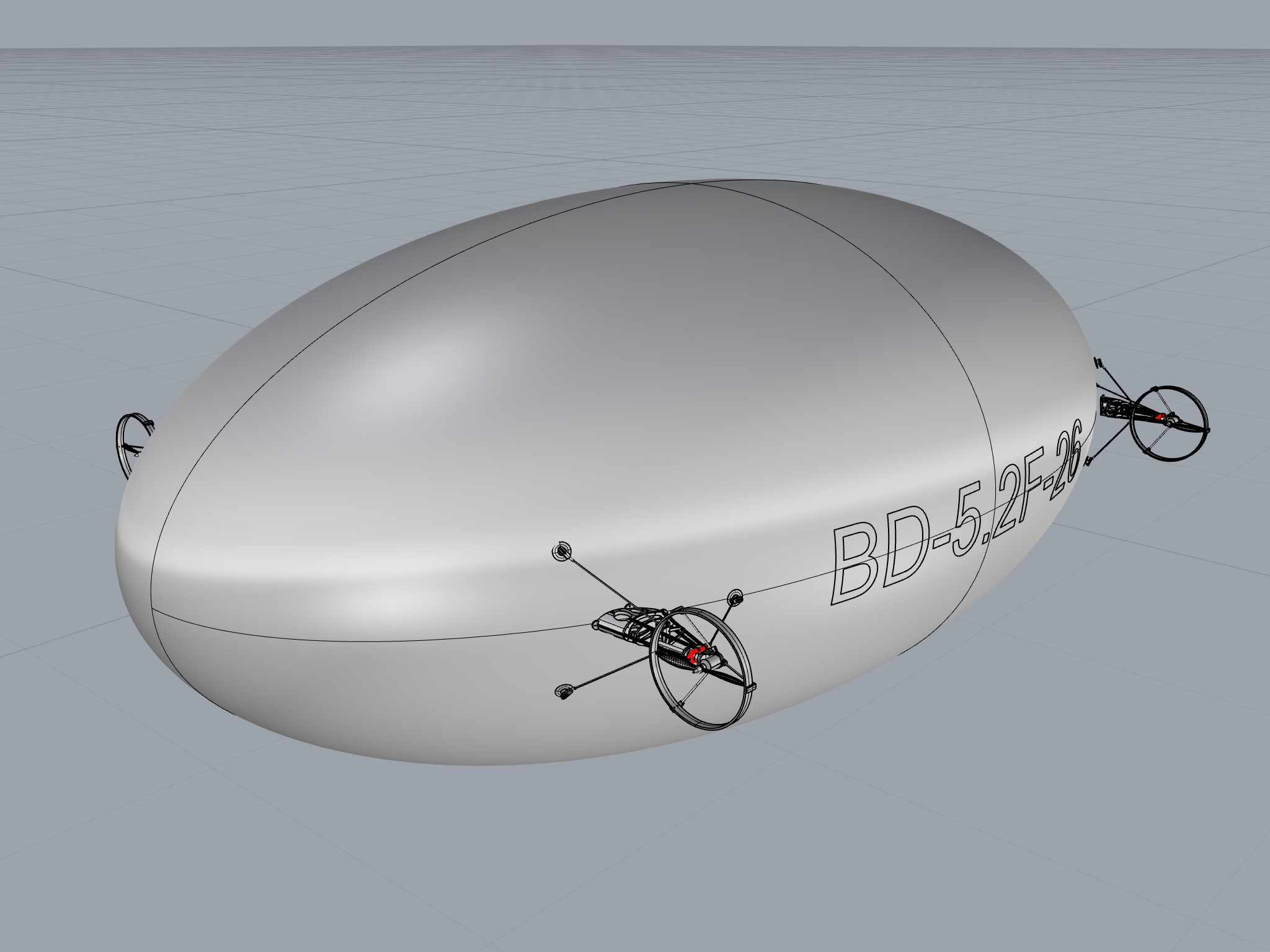
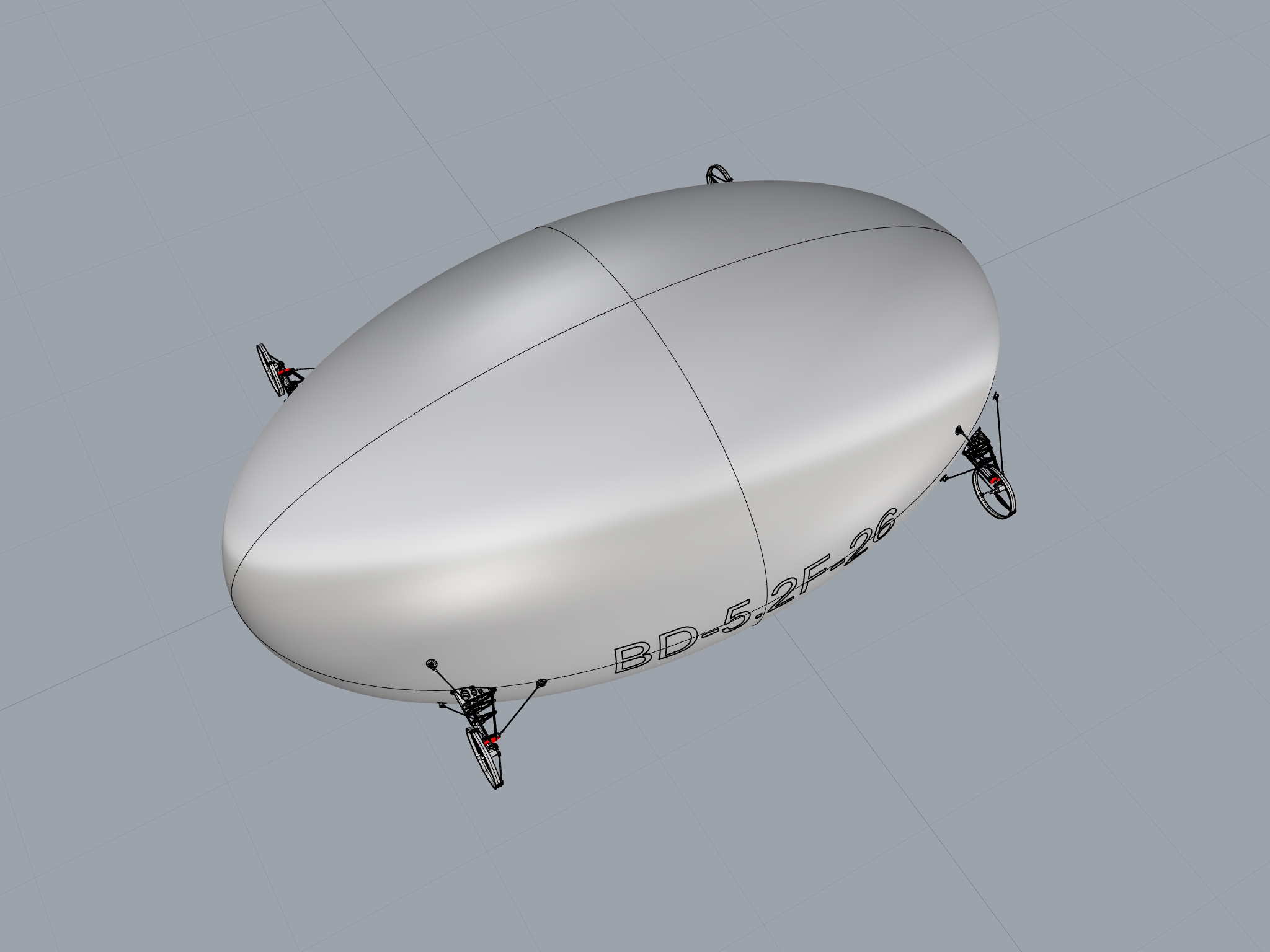
Technical specifications/Description
| Blimp Drone type / name | 4 vectored motors - BD-5.2F-26 |
| Blimp size | 5.2 m (length) x 3 m (width) x 2.2 m (height) |
| Volume | 18 m3 |
| Blimp envelope material | 100 microns Polyurethane |
| Assembly technology | Ultrasonic welding |
| Brushless motors | 4 x Kavan 3542-950 |
| Brushless ESC | 4 x Kavan PRO-80SB |
| Motors mount | Carbon/3D print/aluminum composite |
| Motors axis | 180 degrees |
| RC Safety valve | Set into the envelope |
| RC Safety reel | Set in the nacelle area |
| Shaft rotation and motor speed control | Arduino/TX/RX/SBUS |
| RX/TX | Futaba/Kavan/ or similar |
| Autopilot upgradable | YES |
| Payload | 3 kg minimum |
| Price ready to fly | 27.493 Euro / 31.171 USD |
| Optional | Internal light (570 Euro), Airbrush logo 2 sides (630 Euro), Total envelope airbrush (3530 Euro) |
| Pre-orders | YES - with 50% payment |
